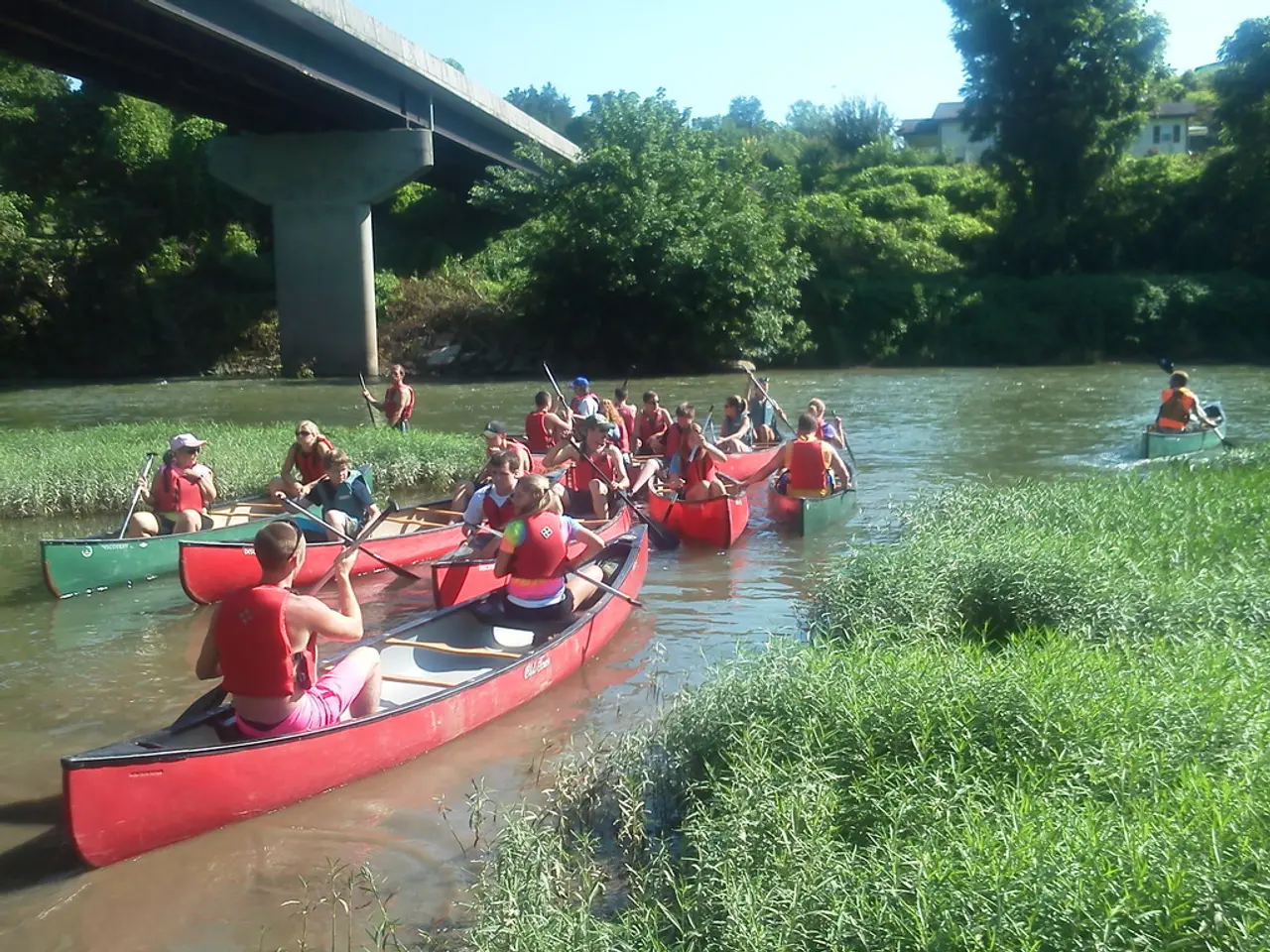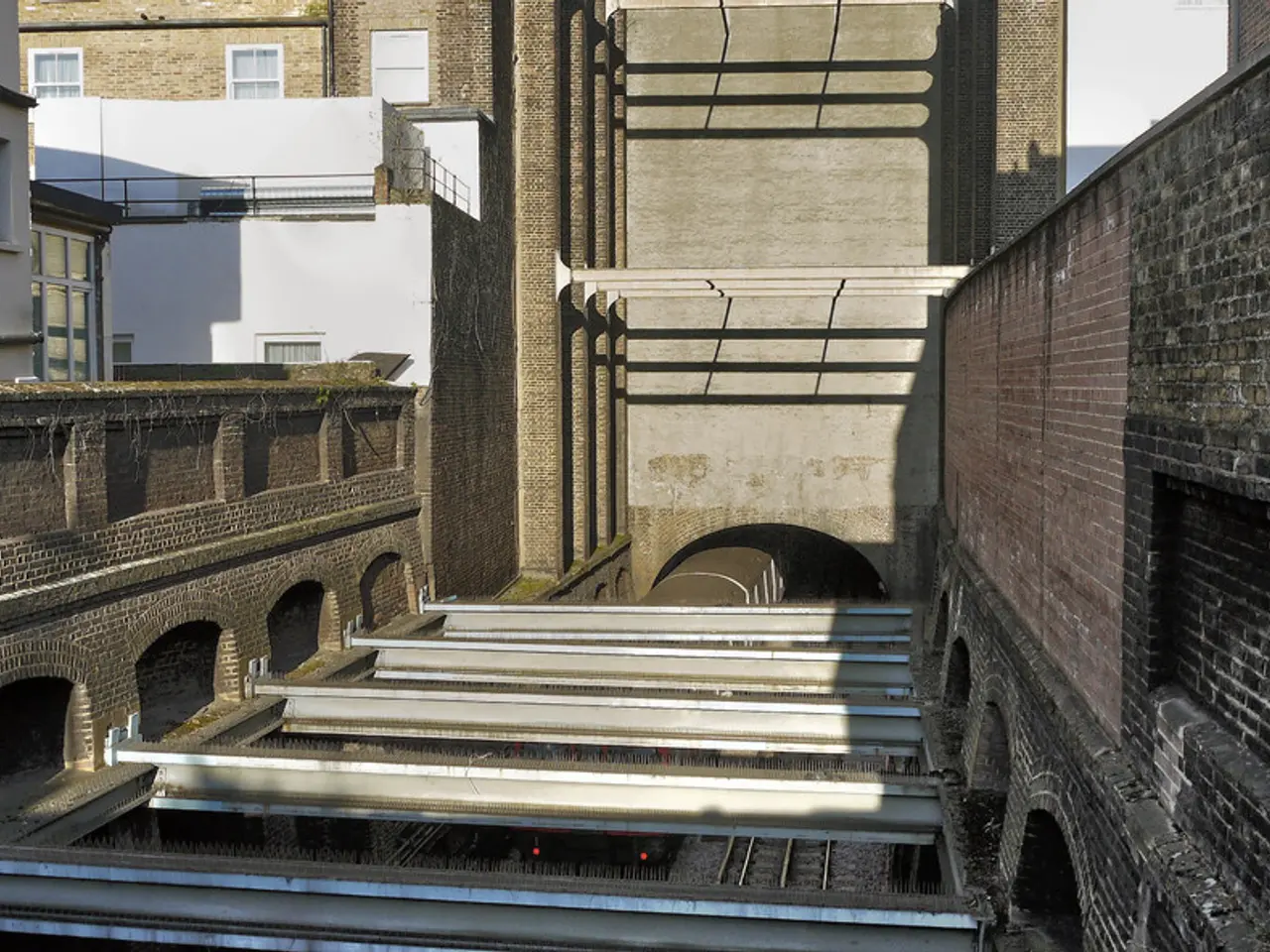European Metropolis, Paris, Experiences Mass River Immersion: A Historical Trend in Urban Bathing
**Swimming Regulations in Major European River Cities**
Exploring the waterways of Europe's urban landscapes, we delve into the swimming regulations that govern various rivers across the continent. Here's a snapshot of the rules and regulations in cities outside Paris, London, Amsterdam, Rome, Berlin, and Spain.
### Zurich, Switzerland
Swimming enthusiasts in Zurich are in luck as the Limmat River offers a popular spot for a refreshing dip. The city has invested significantly in maintaining water quality, making it an attractive destination for swimmers [1]. However, general swimming might be restricted in certain areas or at specific times due to water quality or special events.
### Rotterdam, the Netherlands
Rotterdam, part of the Swimmable Cities initiative, boasts designated urban swimming areas, such as the harbor of Rijnhaven [4]. Swimming is allowed in these designated spots, with a focus on maintaining water quality and ensuring safety.
### Copenhagen, Denmark
Copenhagen's urban rivers are some of the cleanest in Europe, making it an ideal location for swimming [2]. While swimming is generally permitted, there may be specific guidelines or restrictions in certain areas to maintain water quality.
### Vienna, Austria
Swimmers can find designated areas along the Danube Canal, which runs through Vienna, for a safe and enjoyable swim [3]. Regulations are in place to ensure safety and water quality, with specific areas designated for swimming.
### Prague, Czech Republic
While there are limited designated swimming areas in the Vltava River, it is generally not recommended due to water quality concerns [5]. Swimming is discouraged in most parts of the river due to safety and water quality issues.
### Additional Details from Rotterdam, the Netherlands
Rotterdam's commitment to urban swimming initiatives is highlighted by its selection to host the inaugural Swimmable Cities Summit. The city showcases its infrastructure support for swimmable cities with a new urban swimming area in the Rijnhaven harbor [4].
Despite the progress made by some cities, others still face challenges such as pollution and safety concerns. For instance, swimming in the Tiber in Rome is banned due to the river's poor condition. In London, a closed canal section in the Canary Wharf financial district has recently been opened for swimming. Swimming in the Spree in Berlin has been banned for about 100 years. In Bosnia and Herzegovina, the jumps from the Stari Most bridge in Mostar into the Neretva river are a tourist attraction, but are only for trained individuals due to the risk involved.
- In addition to Zurich, Copenhagen, and Vienna, Rotterdam also offers designated urban swimming areas, such as Rijnhaven, as part of the Swimmable Cities initiative.
- The fashion-and-beauty industry can incorporate sustainable practices by sourcing textiles and products that promote water conservation, addressing the pollution concerns in some rivers suitable for swimming.
- The home-and-garden sector can contribute to improved water quality by investing in eco-friendly systems, like rain gardens or permeable pavers, to manage stormwater runoff and reduce pollutants entering rivers.
- Other travelers might be interested in exploring the food-and-drink scene in these cities, providing a diversified experience while waiting for improvements in the water quality to enjoy swimming in rivers like the Vltava or Tiber. Additionally, keeping updated on the weather before visiting these cities can ensure optimal conditions for various outdoor activities, including sports like kayaking or hiking.




